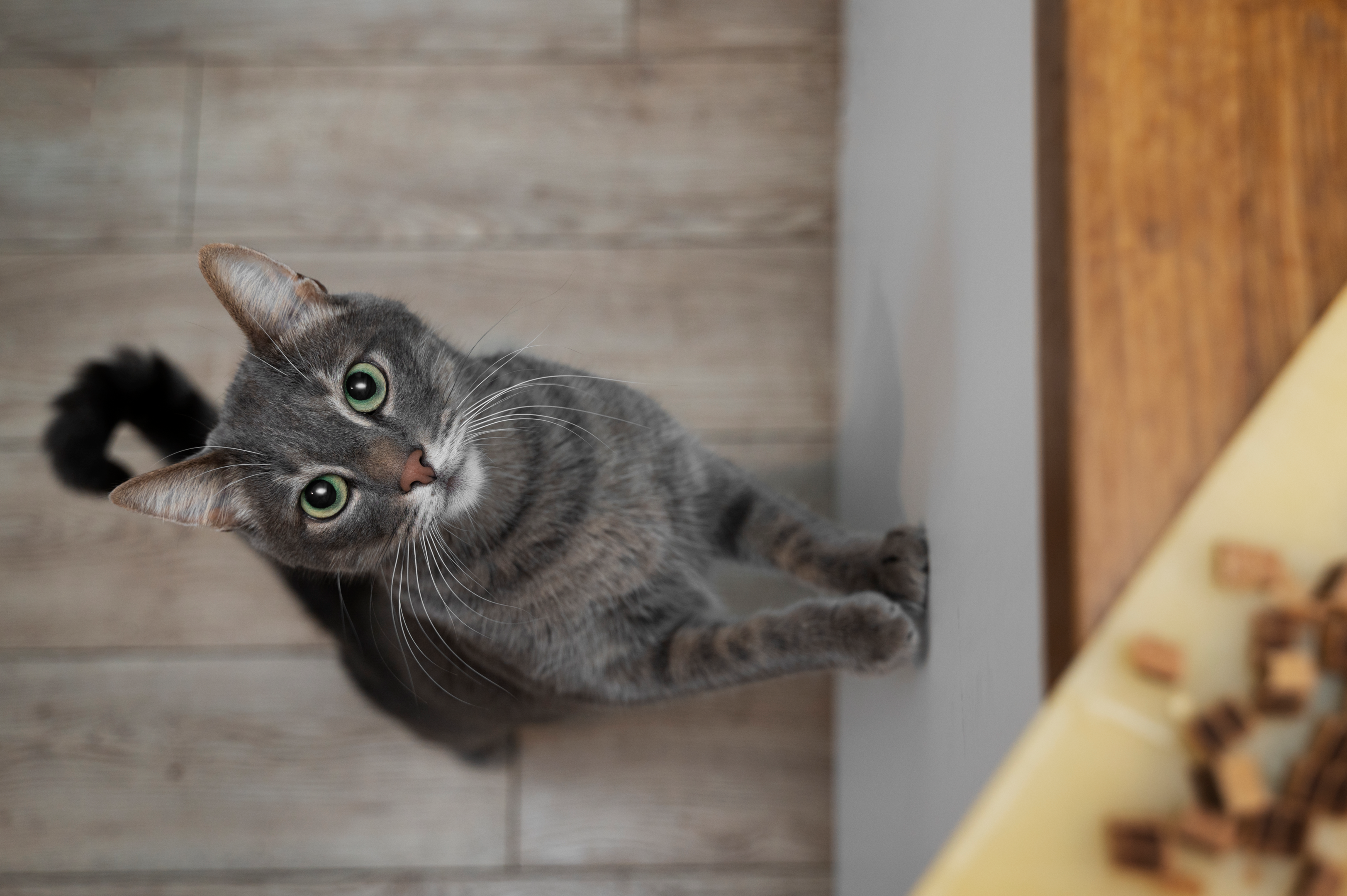
Have you ever thought about making sure the new indoor cat you brought in feels super comfy and safe in your home?
Well, it's important to create a cozy space for your furry friend to feel happy and secure, so that they can feel truly at home.
In this article, we'll check out some super easy and practical ways to set up a special spot in your home where your indoor cat can chill, feel safe, and just enjoy life to the fullest.
So, do you need to make your cat feel protected? Say no more! Rexipets has your back.
Why Your Cat Needs a Safe Room?
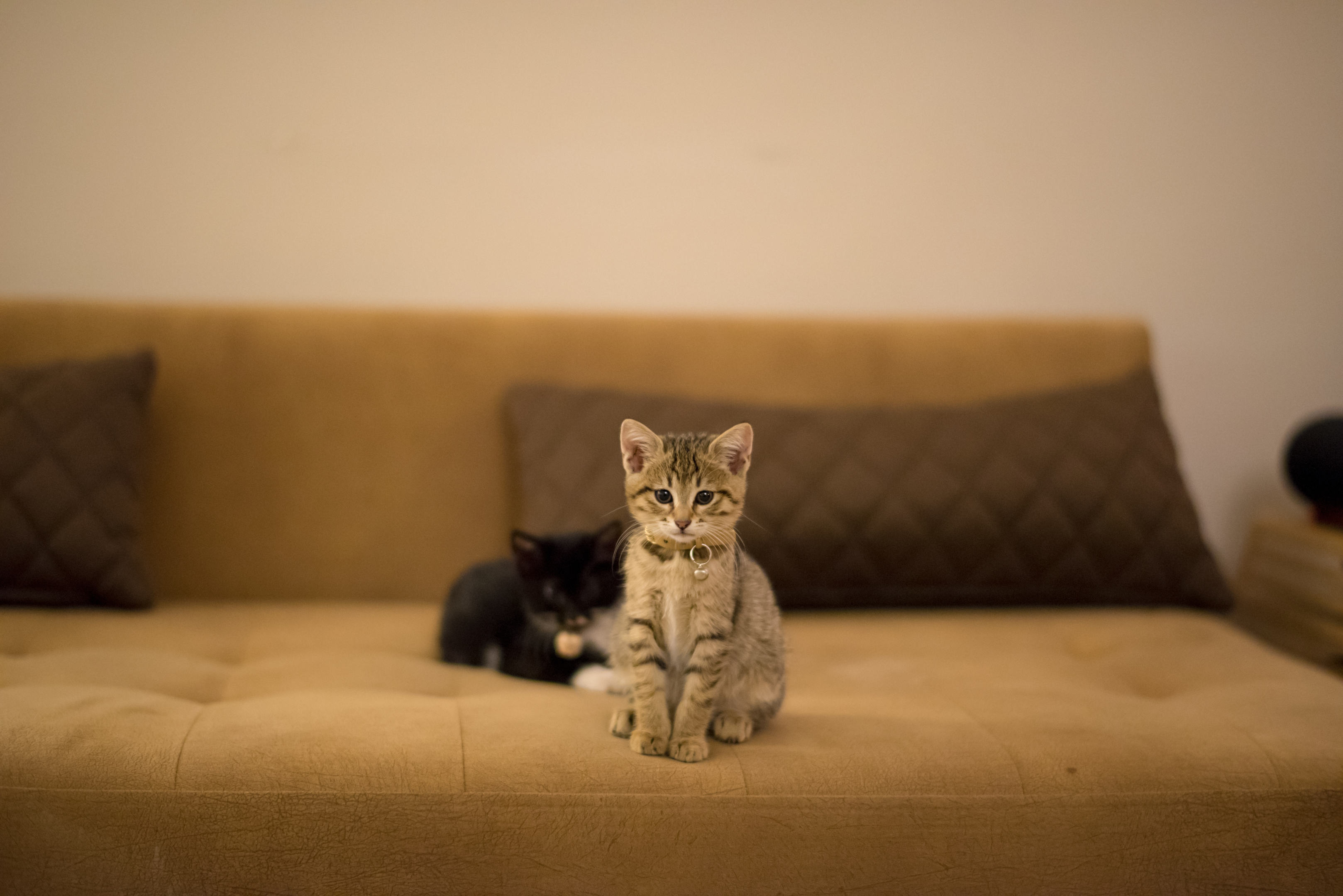
Safe rooms are particularly useful when you already have one or more cats or another pet at home. This can enable a gradual introduction between the new cat and your resident cats in their new home. Cats are territorial creatures, and forcing introductions can lead to aggression. Give them time to get acquainted at their speed. Most cats can eventually learn to coexist peacefully.
Cats tend to be shy, even in the best situations, and then tend to find hiding places to keep themselves safe. Those who come from busy shelters or rescue environments might carry some stress and anxiety. Even the more outgoing cats can benefit from having a designated safe room, giving them the chance to adjust to new surroundings gradually and explore at their own pace.
A large house or even a small apartment can feel overwhelming to a cat, making one room a less intimidating and more secure space.
How to Choose a Safe Room?

Before bringing your new cat home, it's beneficial to pick out and prepare a room. Ideally, this designated safe space should be small and have a door or a baby gate. It should include a bathroom, a spacious closet, or a smaller guest room. It's important to avoid selecting rooms that are noisy or used frequently, like the laundry room or any other service room.
Before making the call, survey the chosen room for potential hiding spots where the cat might try to squeeze in, such as behind furniture, and take measures to block them off. This ensures the cat can't hide in places that are hard for you to reach.
Additionally, assess the safe room for any potential hazards. Secure cleaning chemicals, conceal exposed electrical cords, tie up pull cords on blinds, and eliminate any poisonous houseplants.
Goods for a Secure Environment for Your Cat
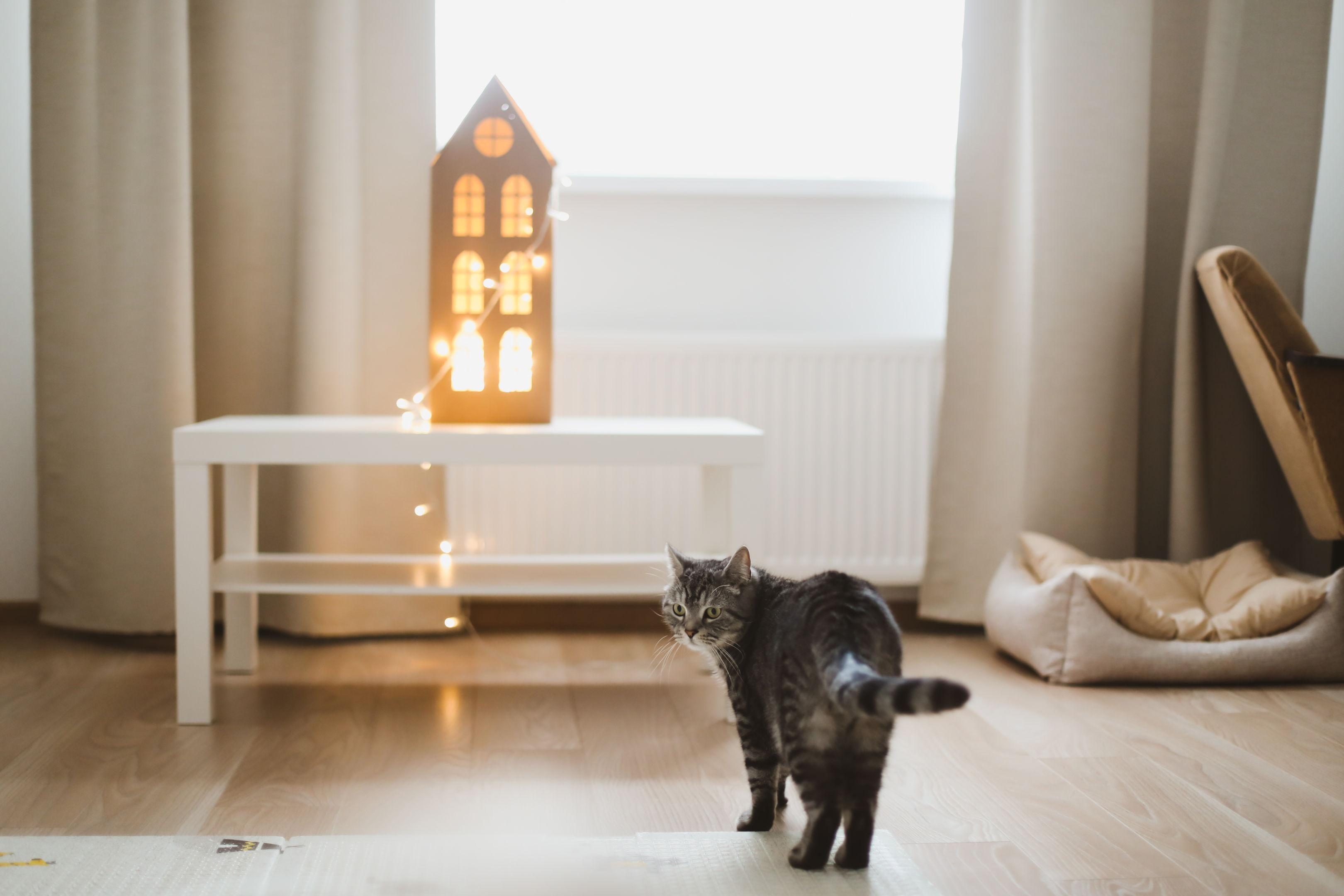
Creating a secure environment for your cat involves catering to their basic needs. Here are five essential elements to ensure your feline friend feels comfortable and content
-
Scheduled Meals
Provide your cat with consistent and predictable meal times. If you have multiple cats, it's crucial to have individual food bowls for each cat in your household. This helps prevent conflicts during feeding and ensures each cat gets their share.
-
Clean Water Station
Cats prefer clean, fresh water. Choose a location for the water bowl that is appealing to your cat. Regularly change the water to maintain its freshness and encourage your cat to stay hydrated.
-
Litter Box Hygiene
Offer a convenient, clean, and private litter box for your cat, and make sure to scoop it at least once daily. As a guideline, the number of litter boxes should exceed the number of cats in your household. Consider a larger litter box, about one and a half times the length of your cat's body, and at least one and a half inches deep.
-
Comfortable Sleeping Area

Create a safe place for your cat to sleep by providing soft bedding infused with familiar smells and sounds. Some cats also appreciate having cozy spots to hide. These comfortable sleeping areas make your cat feel secure and comfortable.
-
Territory and Vertical Spaces
Allow your cat to mark their territory by providing face-rubbing and scratching surfaces. Supplying scratching posts encourages appropriate scratching behavior. Additionally, offer access to elevated spaces, such as cat trees or shelves, to increase vertical territory. This enables your cat to monitor their surroundings and adds to their environmental enrichment.
Meeting these fundamental environmental needs for your cat's space helps prevent stressors that could lead to unwanted behavioral or medical issues. Taking the time to understand and address your cat's requirements fosters a happy and healthy feline companion.
How to Use the Safe Space?

Upon bringing your cat home, gently place it in the designated safe room. If your cat appears fearful or tries to hide, avoid forcing interactions. Instead, sit on the floor, observe your cat quietly, and engage in soothing conversation with a calm, low voice. Allow your cat some space and time to explore independently by closing the door to the safe room.
Visit your cat regularly at scheduled intervals, always letting the cat initiate contact. Consider bringing treats or using a mouse and feather cat teaser wand for play to encourage positive interactions. If you don't have other cats at home, leave the door open, allowing your cat to explore the house at its own pace.
If there are other cats in the household, keep the door closed initially. Your existing cats may approach the door to sniff. It's normal to hear hissing, growling, or yowling as the cats get acquainted through scent. This initial reaction doesn't necessarily indicate how well they'll get along in the future once they become accustomed to each other.
How Long to Use the Cat Safe Space?
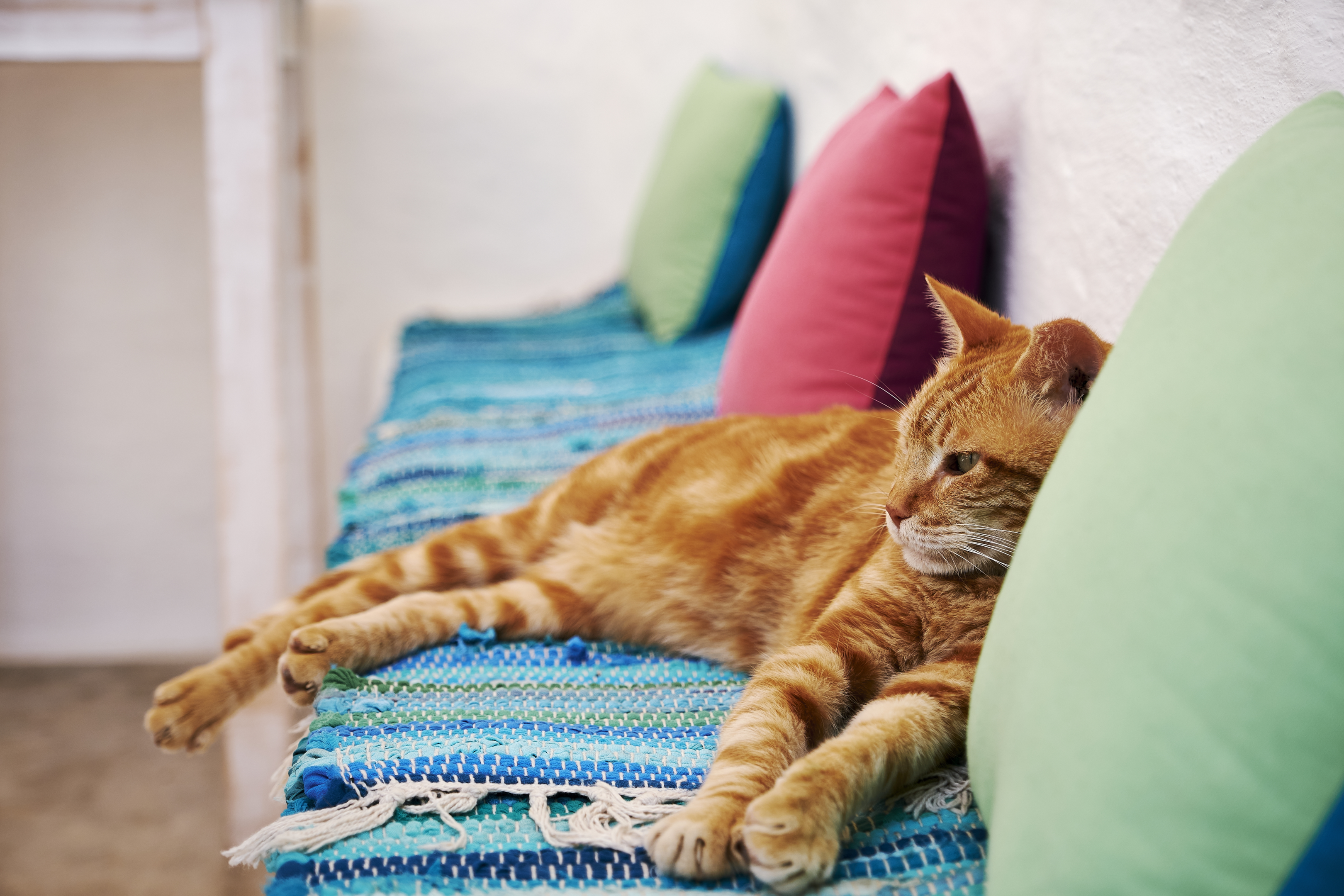
For some social cats, especially those living as the only cat in a household, utilizing a safe room may only be necessary for a day or two. However, if you have other cats, it's advisable to keep them separated for a week or possibly longer, depending on the situation.
If the new cat is eating well, staying hydrated, and actively engaging in play and interaction with you, it could indicate that it's time to stop using the safe space.
To see how well multiple cats are adjusting, consider opening the door and observing their interactions. If the new cat shows interest in exploring, and the resident kitties aren't displaying unwanted behaviors, you can allow the interaction to proceed without forcing it too much.
However, if you observe signs of bullying or aggression, return to using the safe room for a few more days before attempting integration again.
If, after two to four weeks, your cats continue to show aggression or fail to get along with other animals, seeking assistance from your vet is recommended. An animal behaviorist might be necessary to help mediate the issues.
Final Words
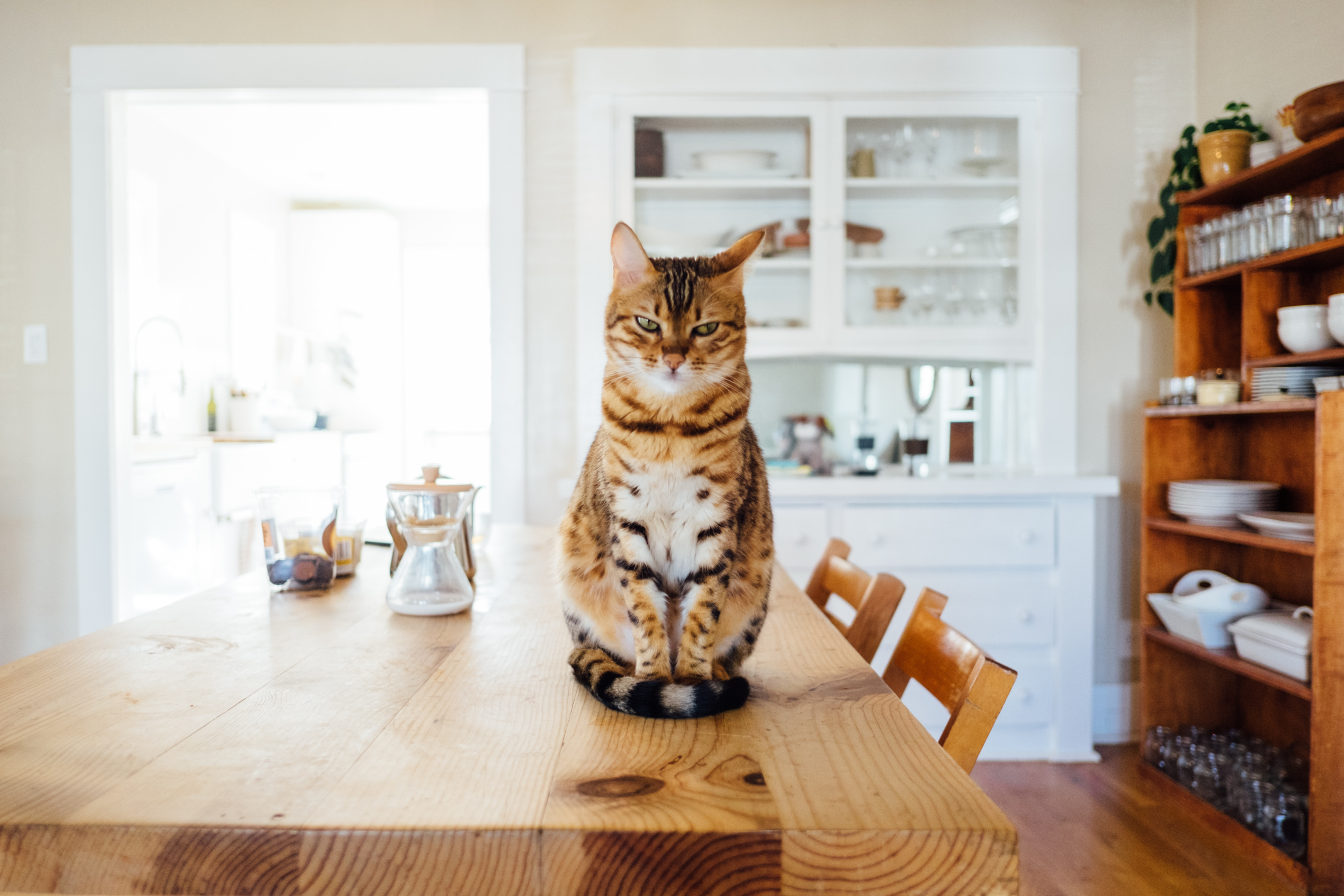
To sum up, making a safe and comfy space for your indoor cat is a nice way to make sure they're happy and your home is peaceful. Cats like feeling secure, and we can help by giving them their special room and taking care of their basic needs like food, water, and a cozy place to sleep.
When bringing in a new cat, it's important to go slow and let them explore at their own speed. If you have other cats, be patient and give them time to get used to each other. Watch their interactions, and if things aren't going well, it's okay to go back to the safe room and try again later.
Each cat is different, so pay attention to what your cat likes and needs. If you are dealing with a scared cat, don't hesitate to ask a vet or an expert for help. In the end, creating a safe space for your indoor cat is not just good for them, but it also strengthens the special connection you have with your furry friend. With a little care, your home can be a happy place for your indoor cat to enjoy for a long time.
FAQs
Do cats need a safe space?
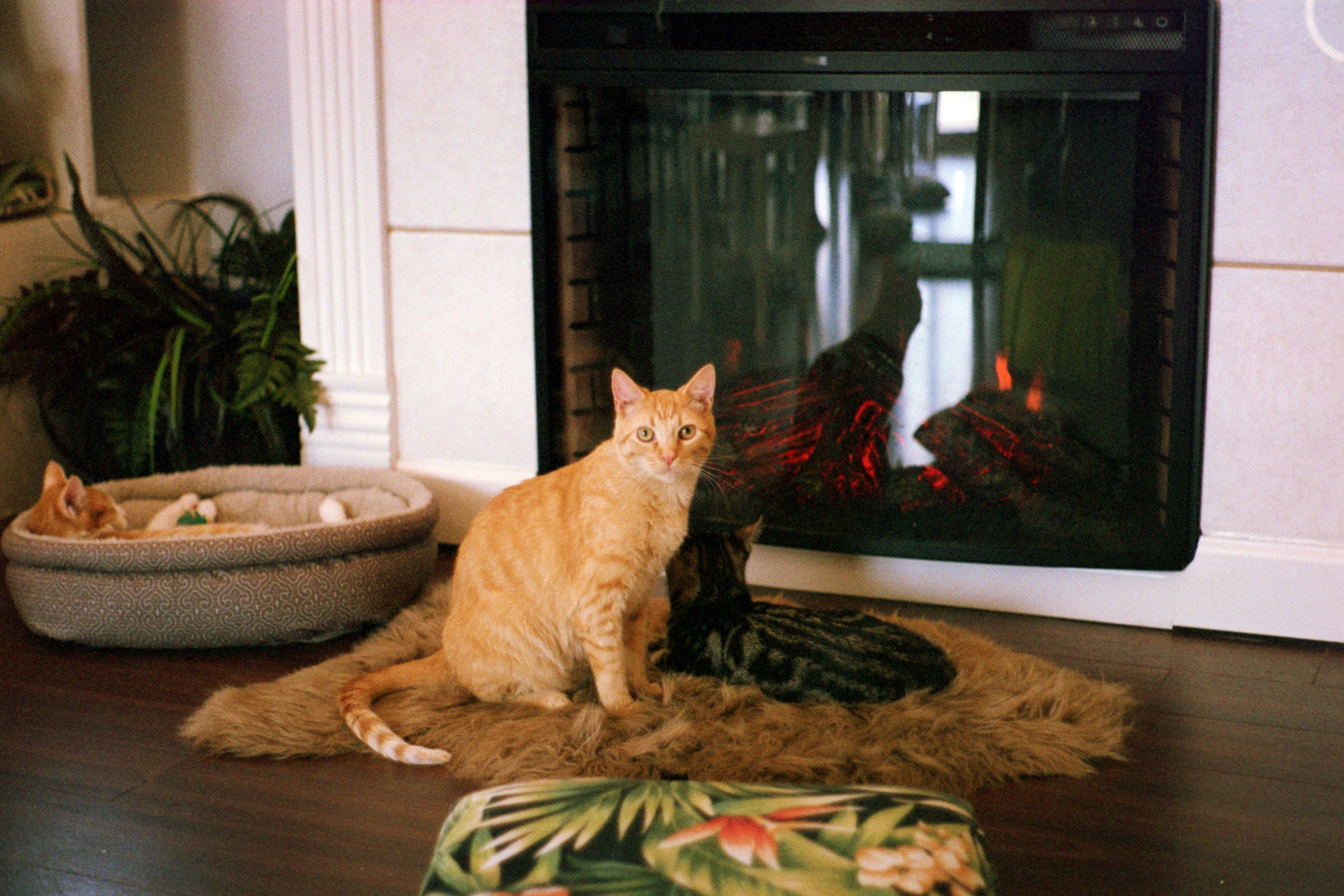
Yes, cats need a safe space. And it's better than keeping the new cat in a cat carrier. A safe space provides a secure and comfortable environment where a cat can feel protected.
A safe space is especially important in situations like introducing a new cat to a home or in multi-cat households where each cat may need their own territory. A safe space can be a designated room with the cat's essentials like food, water, and a litter box. It allows the cat to adjust to their surroundings at their own pace, reducing stress and promoting a sense of belonging and security.
What is the best environment for cats?
The best environment for cats is one that is enriched, providing them with opportunities to have fun. It means giving them plenty of room, a few litter boxes, enough food and water, and fun cat toys to play with. This way, your cat can be happy and healthy.
Make sure there is a scratching post, toys, cozy spots to rest, and nooks to explore. Creating a space with all these things helps your cat have a great and satisfying experience.
















